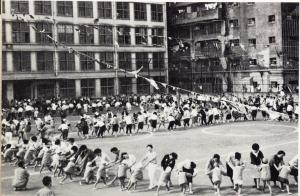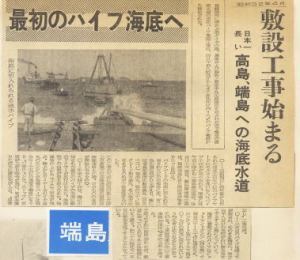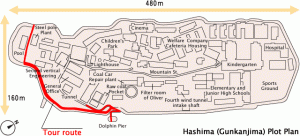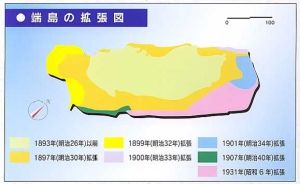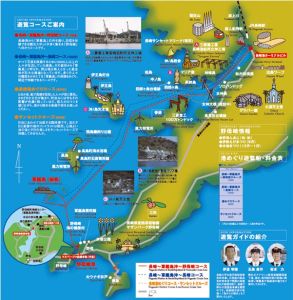We live in a post-industrial world, and our connection to the modes of production, our infrastructure, and the cogs of society is becoming more and more disembodied from day-to-day life. This guide is meant to be an introduction to one of the fastest growing hobbies our modern time: Urban Exploration.

Urban Exploration (Photo credit: tj.blackwell)
The World of Urbex
The definition of Urban Exploration may be different for every adherent, but most urban explorers call themselves modern historians, discoverers, archivers, documentarians, and architecture buffs. Some explore for simple aesthetic reasons because they find the crumbling edifices of society to be perfect artistic subjects. Others find a certain level of adventure and excitement in exploring off-limits areas or skirting the law to reach places that most people can’t see. Still others have a purely historical interest in a specific building or complex.
Whatever the reason, Urban Exploration is something that can be traced back hundreds of years, even back to 1793, when an oft-cited “explorer,” Parisian cataphile Philibert Aspairt, became famous for his untimely death in the Catacombs under Paris. To this day, the Paris Catacombs attracts a subculture that descends underground for regular socializing and fraternizing.
Urban explorers are not such by profession, they’re just like you and me – they have jobs, go to school, watch tv and go to pubs over the weekend. However, every now and then if they feel like it, they sometimes choose to spend their time wading in sewers, climbing skyscrapers, accessing abandoned buildings and infiltrating infrastructures. There isn’t a single main reason why they explore. Some do it as a quest for knowledge, others like the idea of exploring the unknown and forgotten and others just do it for fun. There is no right and wrong approach. Silent UK state that as long as you feel you are getting something positive from the experience, you’re doing it correctly. Thats really all there is to it. Many explorers find decay of uninhabited space to be profoundly beautiful, and some are also proficient freelance photographers who document what they see. Abandoned sites are also popular among historians, preservationists, architects, archaeologists, industrial archaeologists, and ghost hunters.
Several writers on urbex have discussed the personal meaning of such acts of “infiltration” — or “invasions”. Simon Cornwell, in his discussions of the Cane Hill Cult (in Croydon, South London), has emphasized the element of danger in recording the experiences — physically, emotionally and photographically. This element of danger serves to heighten the existential anxiety of exploration.
There are a few unwritten rules in Urban Exploration, and one should be cognizant of the protocol in order to be fully accepted and trusted as a new member of the sub-culture. The most common and oft-quoted rule follows the mantra of the Sierra Club: “Take only photographs, leave only footprints.” Though not all urban explorers follow this directive, the vast majority do. Many abandonments possess a treasure trove of esoteric objects, unique contraptions, rare industrial components, or special antique items that could sell for a handsome profit on eBay. Despite all this, the community has decided to officially condem taking any object from a building. Graffiti and vandalism are generally condemned, but there are exceptions. It should be noted that urban explorers are a diverse group of tens of thousands, potentially hundreds of thousands. The diversity of opinions falls in both extremes, but the moderate and mean consensus generally follows the rule of law except for the very notable exception of Trespass. As of now, there is no officially sanctioned urban exploration moral codex. In fact, “following the rules” would run counter to the central principle of exploring. For this reason, urban explorers have a general understanding of the community’s moral compass and make of it what they will.
I would recommend “The Hazards of Haikyo and Urban Exploration” which explains much better than I ever could the details about the safety issues and needed gear for urban exploration.
The Haikyo and Ruins of Japan
“I’ve always been interested in ruins, ever since seeing movies like Goonies and Indiana Jones as a kid,” says Michael John Grist, who lives in Tokyo and has been going on haikyo expeditions for around three years now. “I did a few haikyo in Japan by happenstance in my early years here—places that I had stumbled across and thought I would check out. One was an apartment block and one an old air base.” Not long after, an article on haikyo caught his eye, and now Grist heads out on an expedition once every few weeks.
For Florian, a Kansai-based haikyoist, studying history kick-started his interest in exploring industrial ruins. Looking to blogs, online maps, magazine articles and books, he completed his first haikyo only six months ago, but now heads out on such expeditions as often as he can. “It has strengthened my interest in Japanese history,” says Florian. “Haikyo to me is a part of social history, as it allows a glimpse of how people lived or worked in past times.”
Yet up until recently, before the low birth rate and the aging population started wreaking havoc on Japan’s inhabitants, population and where to put that population was such an issue that in some areas, the government began to reclaim land from the sea. So why are abandoned places left relatively untouched in a place where space is so hard to come by?
“In a country that has prided itself on the rate in which it has moved on and pushed forward since the end of World War II, it was incredible to being a part of Japan that seemed to be standing still.”
Grist supports a notion discussed by Alex Kerr in his 2001 novel Dogs and Demons, which states that it is an “after-effect of the 80s bubble economy, which was built around real estate.”
“The [property] was a toxic asset,” Grist explains, “and doing anything with it all, [whether it was] reworking, selling, or buying, would be to sink further money into a black hole.” Essentially, the property is worth more as is—meaning on paper—than it would be to get rid of or do anything with it. And as a result, haikyo has not only been enabled, but locations for such expeditions have proliferated the Japanese countryside. This is, of course, good news for haikyoists.
Grist has explored a range of sites around Tokyo and Japan, including capsule and love hotels, hospitals, museums, the ruins of a kaiten suicide boat base, and the Kawaminami POW Shipyard. He has parlayed this hobby into a fantastic website, where he shares his photographs and site descriptions with readers from around the world.
‘Gunkanjima – The Holy Grail of Haikyo’
I have interviewed a few urban explorers for this week’s task. It has been quite hard to pin some of them down – they might have their own websites, which they update regularly with new scoops on their haikyo trips, but they’re always away on adventures!
No matter their nationality – French, American, British, Russian, Spanish – they all have written articles on Gunkanjima, some of which I have already referenced in previous posts. Some of them have visited the island – some more than once – and some can only dream and plan about their trip to this abandoned paradise of ruins. With the questions I’ve asked them, and which they’ve graciously agreed to answer, I am trying to find out not only what are their motivations to visit Gunkanjima, but what makes Battleship island so unique or popular compared to other modern ruins in Japan and in the world.
Reference:
“The Art of Urban Exploration”
“Haikyo – Urban Exploration in Japan”
“Haikyo/Ruins”
“The Urban Exploration Resource”



